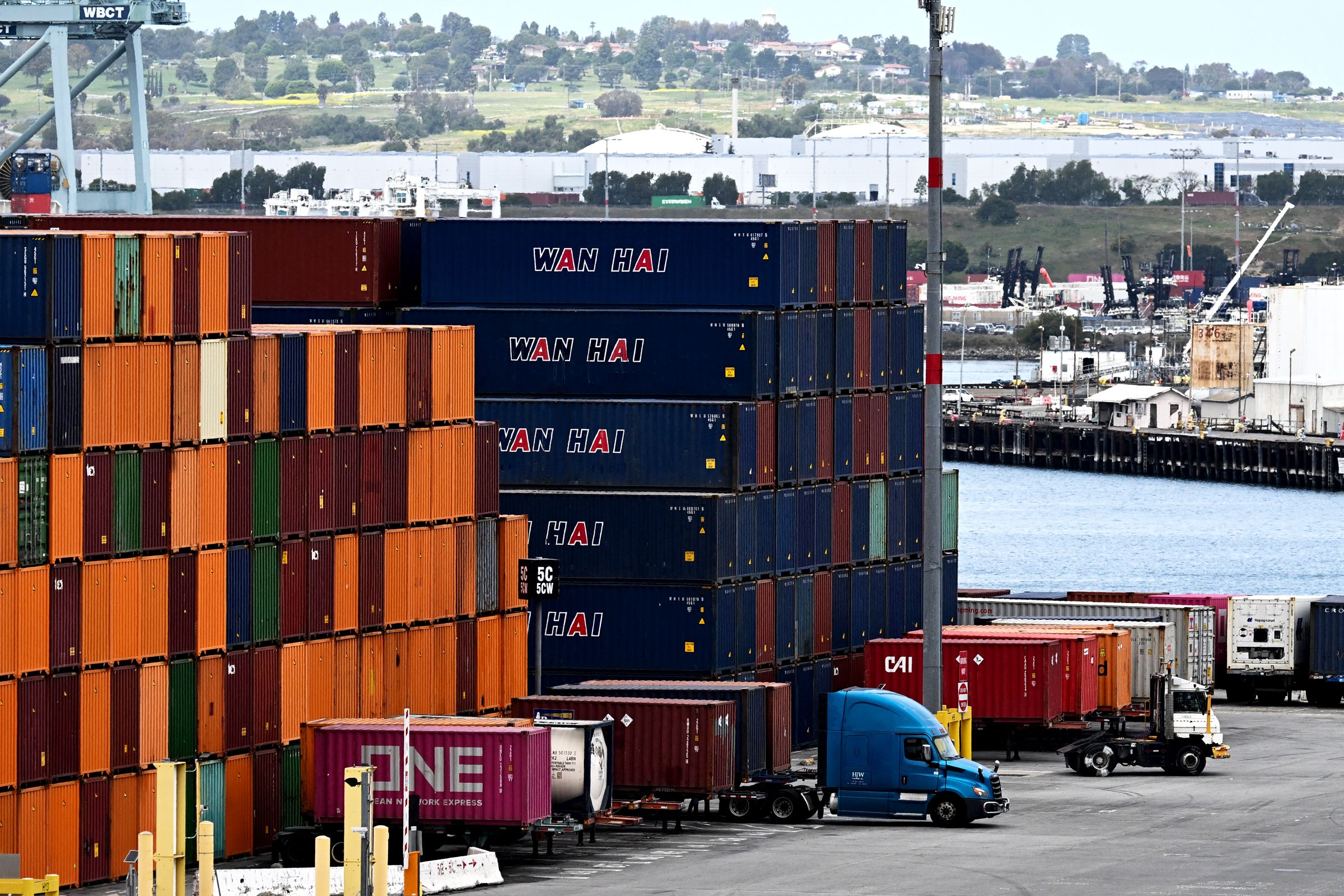As the trade war between China and the United States continues to escalate, Beijing is responding by turning to one of its favorite retaliation tactics: limiting the export of critical minerals used in many high-tech electronics, from fighter jets to wind turbines. While China’s mineral restrictions may sound scary, the reality is that they haven’t been very effective in the past and stand to become even less so if the US and other countries finally get their acts together.
It all started in July 2023, when the Chinese government announced it would restrict the export of gallium and germanium, two critical minerals that are mostly used in making solar panels and semiconductors. Over the following two years, China’s list of controlled products expanded to include antimony, graphite, and other materials. Earlier this month, the Chinese government escalated things even further, subjecting seven rare earth elements to a more comprehensive export licensing program that covers the whole world and is designed to further choke off American companies.
Rare earths are a subset of elements under the broader umbrella of critical minerals that China has long enjoyed monopoly control over. In the short term, companies that need these rare earths might be able to rely on existing stockpiles or even turn to recycled electronics to find them. But eventually, the US and other countries will be forced to either ramp up domestic mining or reduce their dependence on rare earths, both of which would make China’s policies sting less. “China has got one shot, and it knows it,” says Ian Lange, an associate professor of economics and business at the Colorado School of Mines.
Rare but Not Irreplaceable
The export controls China announced earlier this month cover samarium, gadolinium, terbium, dysprosium, lutetium, scandium, and yttrium—seven elements that belong to what is known as the rare earth family. They are called “rare” not because of their scarcity but because they often are mixed with other mineral resources and can be hard to separate out.
There are 17 rare earth elements in total, but the Chinese government chose these seven because they are part of a smaller subset of “heavy” rare earth minerals that the country has more control over than others, says Gracelin Baskaran, director of the Critical Minerals Security Program at the Center for Strategic and International Studies. That monopoly was built over decades as China created a robust supply chain for these minerals and the rest of the world turned away from what is a heavily polluting and niche sector. “China processes pretty much 100 percent of the world’s heavy rare earths, which means that they don’t just have a comparative advantage, they have an absolute advantage,” says Baskaran.
But the other important thing to know about rare earths is that—while they are used in a wide variety of products—those items typically only contain very small quantities, and often only in supportive roles. Last year, the United States imported about $170 million worth of rare earth elements, including some that China hasn’t restricted yet, according to the United States Geological Survey. For comparison, the US imported over $327 million worth of fresh potatoes and $300 million worth of potato chips between September 2023 and August 2024.
Perhaps the most important application for rare earth elements is creating magnets that improve the performance of products like electric motors in high temperatures. These magnets can be found in electric vehicles and consumer products like vacuum cleaners.
“The heavy rare earth elements are added as sort of a spice, a doping agent, to maintain the magnetism of the magnet at high temperatures. It also improves corrosion resistance and the longevity of the magnet,” says Seaver Wang, director of the climate and energy team at the Breakthrough Institute, an Oakland-based think tank.
Beyond magnets, these rare earth elements can also serve a range of purposes, such as making metal stronger, improving radar systems, and even treating cancer. Without them, in many cases, technological infrastructure and consumer gadgets won’t be able to perform at the same level—but they will still maintain their basic functions. “The wind turbines will just go out of service 10 years earlier; electric vehicles will not last as long,” says Wang.
Lange agrees that the impact of losing access to heavy rare earth elements would be somewhat manageable for American companies. “One place where that rare earth is in your car is in the motors that pull up and down your window,” says Lange. “There are ways to just deal with some things that are not as fun, like rolling down your windows by hand.”
Loopholes and Workarounds
In the past, China’s critical mineral restrictions haven’t worked very well. One reason is that US companies that want to buy rare earth minerals can simply go through an intermediary country first. For example, Belgium has emerged as a possible re-export hub that appears to pass germanium—one of the minerals Beijing first restricted in 2023—from China to the US, according to trade data. Since the European Union has much closer ties with Washington than with Beijing, it’s difficult for the Chinese government to effectively stop this flow of trade.
Another sign that China’s export controls haven’t been very effective is that the price of critical minerals has increased only slightly since the policies were first implemented, indicating that supply levels have remained steady. “Whatever they did in 2023 hasn’t really changed the status quo” of the market, says Lange.
But China’s latest restrictions are more expansive, and there’s already some evidence that things could be different this time. Companies that need these elements have been forced to buy them from other firms with existing private stockpiles, which have become more valuable in recent weeks. “There is a very steep increase in prices to draw down on stockpiles right now,” says Baskaran, citing conversations she’s had with rare earth traders.
In the long run, however, companies may be able to find technological solutions to address a potential shortage of rare earth minerals. Tesla, for example, announced in 2023 that it had reduced the use of them in its EV motors by 25 percent, and it planned to get rid of them completely in the future. The carmaker hasn’t clarified what it would use instead, but experts speculate it could be turning to other types of magnets that don’t rely on rare earths.
Where Are the American Mines?
While rare earths, or critical minerals in general, are often cited along with semiconductors as industries the US wants to reshore the most, the challenges associated with bringing each of them back are very different.
Unlike making advanced semiconductors, which requires using sophisticated machinery worth hundreds of millions of dollars and building extremely complicated factories, critical minerals aren’t that hard to produce. The technologies involved to mine and refine them are mature and both the US and Canada have large natural deposits of some of them. But the mining industry was pushed out of the West because it doesn’t generate much value and is also extremely polluting.
In the past, efforts to build up the critical minerals supply chain in the US have either been slowed down or called off. That’s more due to basic economic calculations, says Lange, rather than technological difficulties. “It’s like bending down to pick up a nickel,” he says, meaning the effort isn’t worth the reward.
Because companies only need tiny quantities of these minerals, the market for them is very volatile—prices can drop when a single new factory comes online and starts mass producing and refining them. That means if a mining company were to open up shop in the US, it could inadvertently tank the price of the same mineral it’s trying to profit from, says Lange.
But if China succeeds in strictly enforcing its export control policies, it might provide just enough incentive for the US government and private companies to finally reshore the mineral refining industry. If that happens, Lange says, it could take about two years for a new critical mineral operation to open in the US.
“It’s really remarkable how China has actually maintained these monopolies in so many critical minerals for 20 years,” says Wang. “But I do think we are maybe starting to turn the corner, where China’s market share may be peaking … and you are starting to see a resurgence of interest in these industries in Northern Europe, Australia, Canada, the US, and Latin America.”


